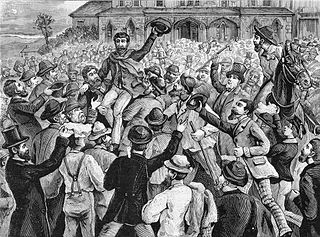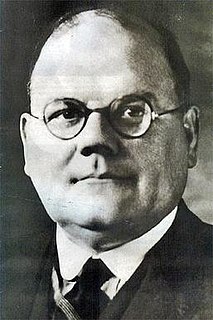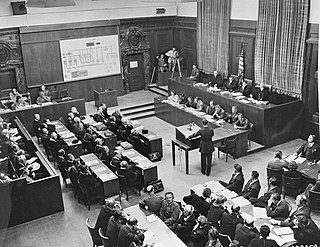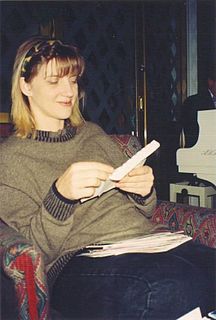Related Research Articles
Double jeopardy is a procedural defence that prevents an accused person from being tried again on the same charges following an acquittal in the same jurisdiction. A variation in civil law countries is the peremptory plea, which may take the specific forms of autrefois acquit or autrefois convict. These doctrines appear to have originated in ancient Roman law, in the broader principle non bis in idem.

In common law jurisdictions, an acquittal certifies that the accused is free from the charge of an offense, as far as the criminal law is concerned. The finality of an acquittal is dependent on the jurisdiction. In some countries, such as the United States, an acquittal operates to bar the retrial of the accused for the same offense, even if new evidence surfaces that further implicates the accused. The effect of an acquittal on criminal proceedings is the same whether it results from a jury verdict or results from the operation of some other rule that discharges the accused. In other countries, the prosecuting authority may appeal an acquittal similar to how a defendant may appeal a conviction.

In law, a verdict is the formal finding of fact made by a jury on matters or questions submitted to the jury by a judge. In a bench trial, the judge's decision near the end of the trial is simply referred to as a finding. In England and Wales, a coroner's findings used to be called verdicts but are, since 2009, called conclusions.
Not proven is a verdict available to a court in Scotland. Under Scots law, a criminal trial may end in one of three verdicts: one of conviction ("guilty") and two of acquittal.

John Bodkin Adams was a British general practitioner, convicted fraudster, and suspected serial killer. Between 1946 and 1956, 163 of his patients likely died while in comas, which was deemed to be worthy of investigation. In addition, 132 out of 310 patients had left Adams money or items in their wills. He was tried and acquitted for the murder of one patient in 1957. Another count of murder was withdrawn by the prosecution in what was later described as "an abuse of process" by the presiding judge Sir Patrick Devlin, causing questions to be asked in Parliament about the prosecution's handling of events. The trial was featured in headlines around the world and was described at the time as "one of the greatest murder trials of all time" and "murder trial of the century". It was also described at the time as "unique" because, in the words of the judge, "the act of murder" had "to be proved by expert evidence."
The Toronto hospital baby deaths, believed to be homicides, occurred in the Cardiac ward of the Hospital for Sick Children between July 1980 and March 1981. They ended when the police were called in and the digitalis-type medication used for the killings (digoxin) began to be kept under lock and key. Three nurses were at the centre of the investigation, and an apparent attempt to poison nurses' food. One of the nurses, Susan Nelles, was charged with four murders, but the prosecution was dismissed a year later on the grounds that she could not have been responsible for a death not included in the indictment, which the judge deemed a murder.

The United States of America vs. Carl Krauch, et al., also known as the IG Farben Trial, was the sixth of the twelve trials for war crimes the U.S. authorities held in their occupation zone in Germany (Nuremberg) after the end of World War II. IG Farben was the private German chemicals company allied with the Nazis that manufactured the Zyklon B gas used to commit genocide against millions of European Jews in the Holocaust.
Pacífico Edralín Marcos was a Filipino physician and known younger brother of former President of the Philippines Ferdinand E. Marcos.

R v Adams [1957] is an English case that established the principle of double effect applicable to doctors: that if a doctor "gave treatment to a seriously ill patient with the aim of relieving pain or distress, as a result of which that person's life was inadvertently shortened, the doctor was not guilty of murder" where a restoration to health is no longer possible. Such medicines are among those sometimes used in palliative care, most commonly for the most severe pain.

Lucia de Berk, often called Lucia de B., is a Dutch licensed paediatric nurse, who was the subject of a miscarriage of justice. In 2003, she was sentenced to life imprisonment for four murders and three attempted murders of patients in her care. In 2004, after an appeal, she was convicted of seven murders and three attempts. Her conviction was controversial in the media and amongst scientists, and was questioned by investigative reporter Peter R. de Vries. In October 2008, the case was reopened by the Supreme Court of the Netherlands, as new facts had been uncovered that undermined the previous verdicts. De Berk was freed, and her case was re-tried; she was exonerated in April 2010.
Gertrude "Bobby" Hullett, a resident of Eastbourne, East Sussex, England, was a patient of Dr John Bodkin Adams, who was indicted for her murder but not brought to trial for it. Adams was tried in 1957 for the murder of Edith Alice Morrell, and the prosecution intended to proceed with the Hullett indictment as a second prosecution that could follow the Morrell case in certain circumstances, although it did not bring the case to trial following the verdict in the Morrell trial.
Edith Alice Morrell was a resident of Eastbourne and patient of Dr John Bodkin Adams. Although Adams was acquitted in 1957 of her murder, the question of Adams' role in Mrs Morrell's death excited considerable interest at the time and continues to do so. This is partly because of negative pre-trial publicity which remains in the public record, partly because of the several dramatic incidents in the trial and partly as Adams declined to give evidence in his own defence. The trial featured in headlines around the world and was described at the time as "one of the greatest murder trials of all time" and "murder trial of the century". It was also described by the trial judge as unique because "the act of murder" had "to be proved by expert evidence." The trial also established the legal doctrine of double effect, where a doctor giving treatment with the aim of relieving pain may, as an unintentional result, shorten life.
United States criminal procedure derives from several sources of law: the baseline protections of the United States Constitution, federal and state statutes; federal and state rules of criminal procedure ; and state and federal case law. Criminal procedures are distinct from civil procedures in the US.
Sir Frederick Geoffrey Lawrence QC was a British lawyer, High Court Judge, Chairman of the Bar Council and Chairman of the National Incomes Commission. He first came to prominence when he defended Dr John Bodkin Adams in 1957 on a charge of the murder of Mrs Edith Alice Morrell, the first murder case he handled. Prejudicial press coverage of the case prior to the trial suggested Adams was guilty and that the verdict would be a foregone conclusion, but Lawrence successfully secured an acquittal. Adams, if convicted, night have been hanged, had he also been found guilty on a second murder indictment that had been brought. Devlin at the time and later investigation suggested Adams was acquitted in part due to inadequate prosecution preparations and also due to the lack of strong and credible evidence.
The Double Jeopardy Clause of the Fifth Amendment to the United States Constitution provides: "[N]or shall any person be subject for the same offence to be twice put in jeopardy of life or limb..." The four essential protections included are prohibitions against, for the same offense:
Kermit Barron Gosnell is an American former physician abortionist and serial killer convicted of murdering three infants who were born alive during attempted abortion procedures; he was also convicted of involuntary manslaughter of one woman during an abortion procedure.

The 2011 Stepping Hill Hospital poisoning incident refers to a series of deaths at the Stepping Hill Hospital in Stockport, Greater Manchester, which began in July 2011.
Richard Angelo is an American serial killer and former nurse at the Good Samaritan Hospital in West Islip, New York. In 1989, he was convicted of murdering several of his patients and sentenced to 61 years to life in prison.

The Winkler County nurse whistleblower case was a series of legal proceedings in West Texas related to the retaliation against two nurses who submitted an anonymous state medical board complaint against a physician in 2009. The case attracted national attention for its implications on whistleblowing by nurses. After witnessing what they believed to be unsafe medical care, nurses Anne Mitchell and Vicki Galle submitted an anonymous complaint against Dr. Rolando Arafiles to the Texas Medical Board (TMB).
Christina Aistrup Hansen is a former Danish nurse who was charged with the murder of three patients and attempted manslaughter at the Nykøbing Falster Hospital.
References
- 1 2 3 4 5 6 7 8 Greg Stejskal (February 3, 2011), The Murders at Ann Arbor’s Veterans Hospital; What Went Right and What Ultimately Went Wrong in the Case, Tickle the Wire
- 1 2 3 4 Galang, M. 2003. Screaming Monkeys: Critiques of Asian American Images. Coffee House Press
- 1 2 Choy, Catherine (2003). Empire of Care: Nursing and Migration in Filipino-American History. Duke University Press.
- ↑ Ngai, Mae. 2005. Impossible Subjects: Illegal Aliens and the Making of Modern America. Princeton University Press
- 1 2 "Long Count to A Guilty Verdict" . Time Magazine. July 25, 1977.
- ↑ Brian Lane. Encyclopedia of serial killers.[ full citation needed ]
- ↑ Cheyfitz, Kirk (July 14, 1977). "Nurses Convicted in Poisoning Case Nurses Convicted in Poisoning Case". Washington Post.
- ↑ Pratt, Phillip. 1978. US. v. Narciso and Perez, Memorandum Opinion and Order Regarding Defendants' Motion for a New Trial p. 17.